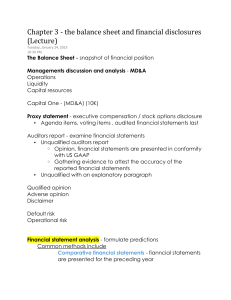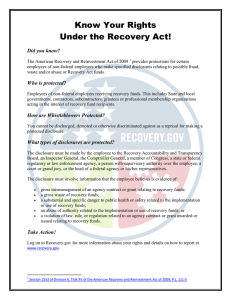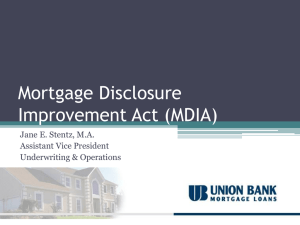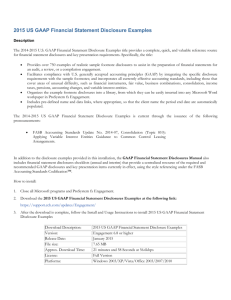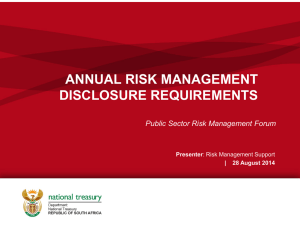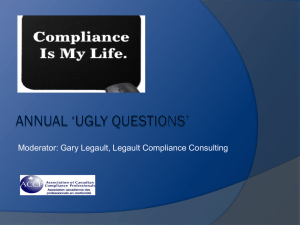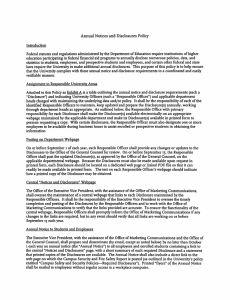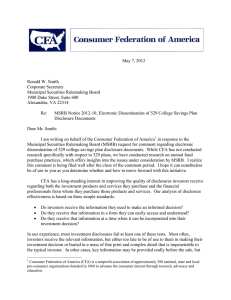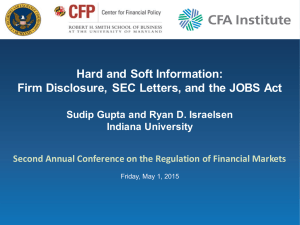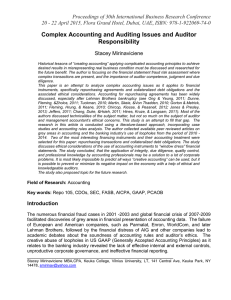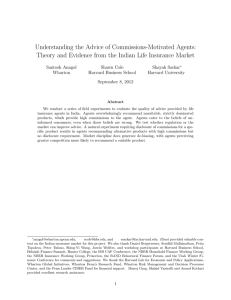The Balance Sheet and Financial Disclosures
advertisement
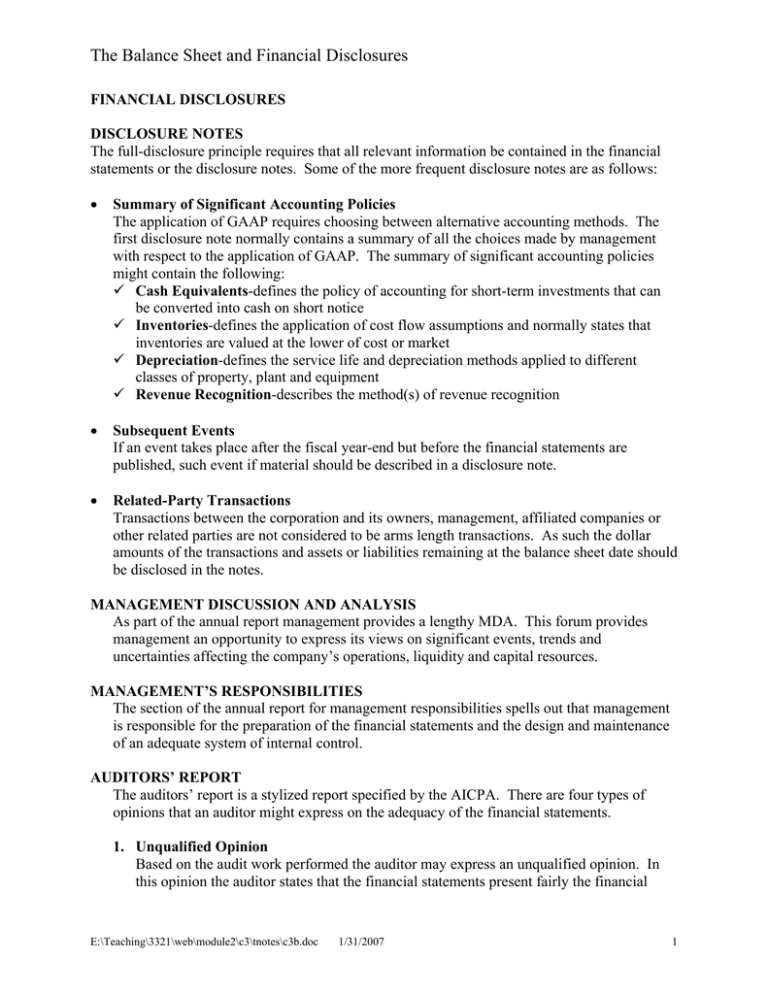
The Balance Sheet and Financial Disclosures FINANCIAL DISCLOSURES DISCLOSURE NOTES The full-disclosure principle requires that all relevant information be contained in the financial statements or the disclosure notes. Some of the more frequent disclosure notes are as follows: • Summary of Significant Accounting Policies The application of GAAP requires choosing between alternative accounting methods. The first disclosure note normally contains a summary of all the choices made by management with respect to the application of GAAP. The summary of significant accounting policies might contain the following: 9 Cash Equivalents-defines the policy of accounting for short-term investments that can be converted into cash on short notice 9 Inventories-defines the application of cost flow assumptions and normally states that inventories are valued at the lower of cost or market 9 Depreciation-defines the service life and depreciation methods applied to different classes of property, plant and equipment 9 Revenue Recognition-describes the method(s) of revenue recognition • Subsequent Events If an event takes place after the fiscal year-end but before the financial statements are published, such event if material should be described in a disclosure note. • Related-Party Transactions Transactions between the corporation and its owners, management, affiliated companies or other related parties are not considered to be arms length transactions. As such the dollar amounts of the transactions and assets or liabilities remaining at the balance sheet date should be disclosed in the notes. MANAGEMENT DISCUSSION AND ANALYSIS As part of the annual report management provides a lengthy MDA. This forum provides management an opportunity to express its views on significant events, trends and uncertainties affecting the company’s operations, liquidity and capital resources. MANAGEMENT’S RESPONSIBILITIES The section of the annual report for management responsibilities spells out that management is responsible for the preparation of the financial statements and the design and maintenance of an adequate system of internal control. AUDITORS’ REPORT The auditors’ report is a stylized report specified by the AICPA. There are four types of opinions that an auditor might express on the adequacy of the financial statements. 1. Unqualified Opinion Based on the audit work performed the auditor may express an unqualified opinion. In this opinion the auditor states that the financial statements present fairly the financial E:\Teaching\3321\web\module2\c3\tnotes\c3b.doc 1/31/2007 1 The Balance Sheet and Financial Disclosures position,, results of operations, and cash flows in conformity with GAAP. The standard auditors’ report is three paragraphs long. If there are circumstances that require elaboration a forth paragraph might be included under the following circumstances. a) Lack of consistency b) Uncertainty c) Emphasis of a matter 2. Qualified Opinion Although a red flag, a qualified opinion indicates that there is some exception that needs to be brought to the attention of the reader. Such exceptions might include. a) Nonconformity with generally accepted accounting principles b) Inadequate disclosures, or c) A limitation or restriction of the scope of the examination 3. Adverse Opinion In an adverse opinion the auditors’ indicate that the financial statements do not fairly present because of one or more serious exceptions. 4. Disclaimer of Opinion In a disclaimer of opinion the auditors’ disclaim any opinion on the financial statements because they were unable to gather sufficient information to support an opinion. COMPENSATION OF DIRECTORS AND TOP EXECUTIVES The SEC requires that disclosures on compensation of directors and executives be disclosed in the annual proxy statement that is sent out with the annual report. This disclosure includes both cash compensation and detailed disclosures regarding stock options. E:\Teaching\3321\web\module2\c3\tnotes\c3b.doc 1/31/2007 2
